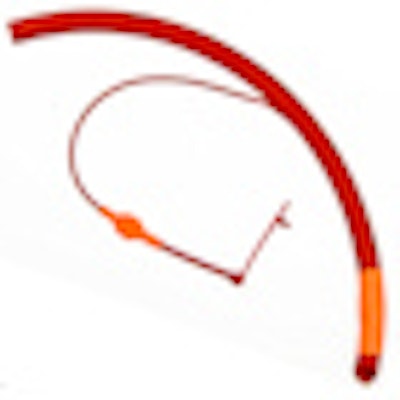
Laryngeal mask airways (LMA) lower laryngospasm more than threefold compared to endotracheal tubes (ETT) used for general anesthesia, according to a new systematic review of the literature (Journal of Oral and Maxillofacial Surgery, July 29, 2010).
Results of the 29-study meta-analysis also reveal LMA reduces hoarse voice by more than 2.5 times and coughing by more than seven times compared to ETT, while also significantly reducing the postoperative risks of sore throat.
This confirms the authors' hypothesis that, because an LMA is placed superior to the larynx, it results in less irritation to the vocal cords and tracheal than the ETT, which is placed in the trachea beyond the vocal cords.
"The number of reports identified in our study and the consistent outcomes of all the studies support the use of the LMA for airway management in the adult patient without airway compromise undergoing an elective surgical procedure," concluded lead author O. Ross Beirne, D.M.D., Ph.D., a professor and the program director of the
department of oral and maxillofacial surgery at the University of Washington School of Dentistry.
However, this approach is not yet, and may never be, widely accepted.
"In the end, the decision on the most appropriate means [of delivering general anesthesia] will be determined by the person providing it, based on the characteristics of the patient and the dental procedure being performed," Daniel Haas, D.D.S., Ph.D., head of dental anesthesia at the University of Toronto, told DrBicuspid.com. "All dentists qualified to administer general anesthesia -- that is, dental anesthesiologists and oral and maxillofacial surgeons -- get experience with all three modalities [LMA, ETT, and face mask] in their training."
Common adverse events
Dr. Beirne and his colleague Seung Yu comprehensively reviewed the literature up to January 2009 for human, randomized, controlled clinical trials (in English) that compared ETT to LMA in adults for general surgical anesthesia. They used the key words "laryngeal mask and tube."
Analyses of the 29 studies meeting these criteria revealed seven evaluated laryngospasm. Among these studies, 7.5% of patients undergoing ETT experienced laryngospasm during emergence, compared to 1.7% with LMA (relative risk [RR] 3.16, 95% confidence interval [CI] 1.38-7.21). Six of the seven studies had a higher rate of laryngospasm with ETT than with LMA, although the difference in each of the studies was not statistically significant. Other findings are shown below:
|
The researchers also found only one case of aspiration in the studies they reviewed; this case occurred in a patient undergoing general anesthesia with ETT.
Dr. Beirne and Yu suggest that future studies comparing ETT to LMA should focus on pediatric patients, different types of LMA, different surgical outcomes, patients' quality of life, surgeon rating of the ease of surgery, anesthesiologist ratings of the anesthesia care, the overall costs of care, and the safety and efficacy of LMA in general anesthesia for office-based oral and maxillofacial surgery.
Copyright © 2010 DrBicuspid.com


















